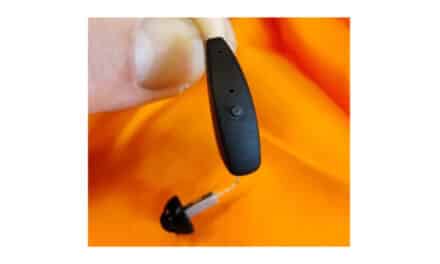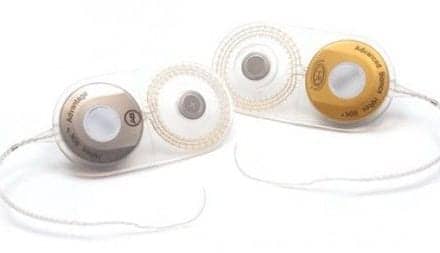January 31, 2008
Med-El Corporation conducted the first U.S. implantation in the clinical trial of the Vibrant Soundbridge (VSB) as a treatment for conductive and mixed hearing loss using direct round window cochlear stimulation. It is the first implantable middle ear hearing device approved by the U.S. Food and Drug Administration (FDA) to treat sensorineural hearing loss.
Adults who have conductive or mixed hearing loss and have been unsuccessful with traditional amplification may be candidates for the trial which opened in the United States January 18. Jennifer Maw, MD, founder of Ear and Rehabilitative Services (EARS) Inc, San Jose, Calif, performed the implantation that opened the study.
“I am extremely enthusiastic about this new study,” Maw says. “This procedure has the potential to revolutionize how ear surgeons treat chronic ear disease and hearing loss. Eustachian tube dysfunction limits the hearing results that patients can achieve with reconstructive ear surgery, and there are no well-established treatments for this problem. As this device can mimic the function of the middle ear, we can potentially help a large category of patients who could not be previously considered as suitable surgical candidates.”
According to a statement from Med-El, the device is currently indicated for use in adults who have moderate-to-severe sensorineural hearing loss and who cannot achieve success or adequate benefit from hearing aids, or cannot medically tolerate hearing aids. The company states the VSB is a safe and effective treatment that leaves the ear canal completely open and has achieved a 94% improvement in patient satisfaction among thousands of individuals worldwide.
The product utilizes hearing technology that directly drives the ossicular chain (middle ear bones) or other middle ear structures, bypassing the ear canal and tympanic membrane (eardrum). It consists of two major components: 1) the implanted component, called the Vibrating Ossicular Prosthesis (VORP), and 2) the externally-worn receiver, called the Audio Processor (AP), which is approximately the size of a quarter. Unlike a hearing aid, which simply amplifies sound, the Soundbridge is a direct drive prosthetic, which mechanically vibrates structures in the middle ear.
Med-El cautions that use of the VSB as a treatment for conductive and mixed hearing loss using direct round window cochlear stimulation is an investigational device, limited by federal law to investigational use in the United States.
“The Vibrant Soundbridge clinical trial presents an exciting possibility for Americans with conductive and mixed hearing loss, for whom hearing aids are not an option,” said Kim Jackson, vice president of Clinical Services. “Med-El invests more revenue into research than any other hearing implant company in an effort to continue to provide the latest advances and cutting-edge technology to people with hearing loss.”
Implantation of the Soundbridge bears the same surgical risk as any middle ear surgery, and the surgical procedure is very similar to that of the approved Vibrant Soundbridge indication and also that of the approved Med-El Cochlear Implant, according to a source at Med-El. It is possible that placement of the device may need to be revised if the optimum outcome is not obtained or if the device migrates from the original position. Trauma to the inner ear during surgery may result in decreased residual hearing.
Trial sites around the country are recruiting subjects in this study. To participate in the clinical trial, subjects must meet inclusion criteria such as having conductive or mixed hearing loss and be at least 18 years of age. Potential candidates can contact Med-El at (888) MED-EL-CI (633-3524), or via e-mail at [email protected] to learn more about participating in this trial.
Source: Med-El




